Britain with no Motorhome
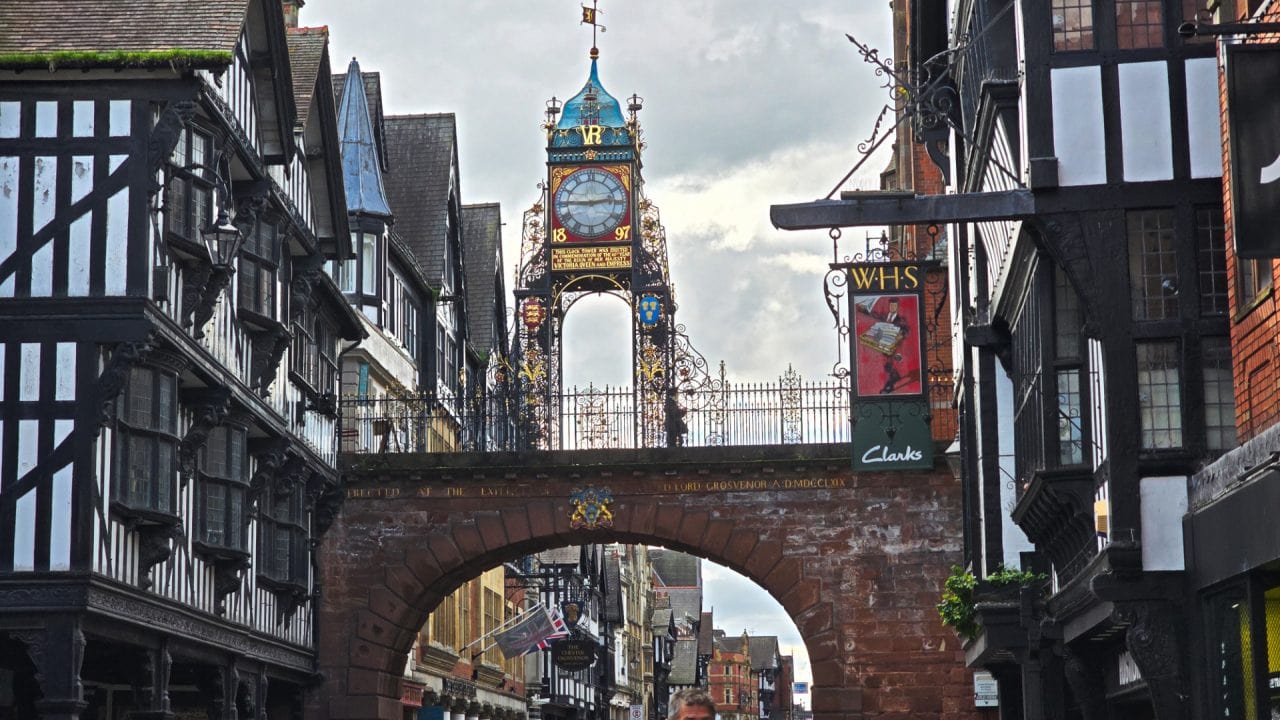
It’s been almost three weeks since Mike and I dropped our RV off at the docks in Antwerp. Since then, it’s been a rollercoaster—stressing over RV issues while also catching up with family members I haven’t seen in years (decades, really 😊).
The good news, if things go smoothly, is that Mike and I should arrive in Halifax at the same time as the RV. We actually tried to plan for a few extra days to allow for possible delays, customs clearance, etc., but WestJet’s quirky pricing made the 15th by far the cheapest day to fly, so the 15th it was.
Shipping the RV home has been way more stressful than necessary. We started planning late and found out we couldn’t bring our Lincoln back like we had originally planned. We also discovered that if we wanted to get home before winter arrived in the east coast, we had just two days to pack up eight years of life in our motorhome into boxes stored completely out of sight. Shipping company rules. We got the camper to the docks on September 26, with a deadline of September 27 at 11:00 AM. We just made it! The camper was supposed to be loaded onto a ship by October 4, but with the looming US dockworker strike on October 1, we had no clue what kind of chaos that could cause for our shipment. Mike and I were planning to meet the RV in Halifax, but we had no idea when—or even if—it would get there.
Everything was done last minute. We booked the ferry while we were already en route to it, we didn’t reserve our hotel in the UK until we were driving there, and it continued like that for our entire visit! Hopefully, all goes well with the shipping and we’re reunited with the RV soon!
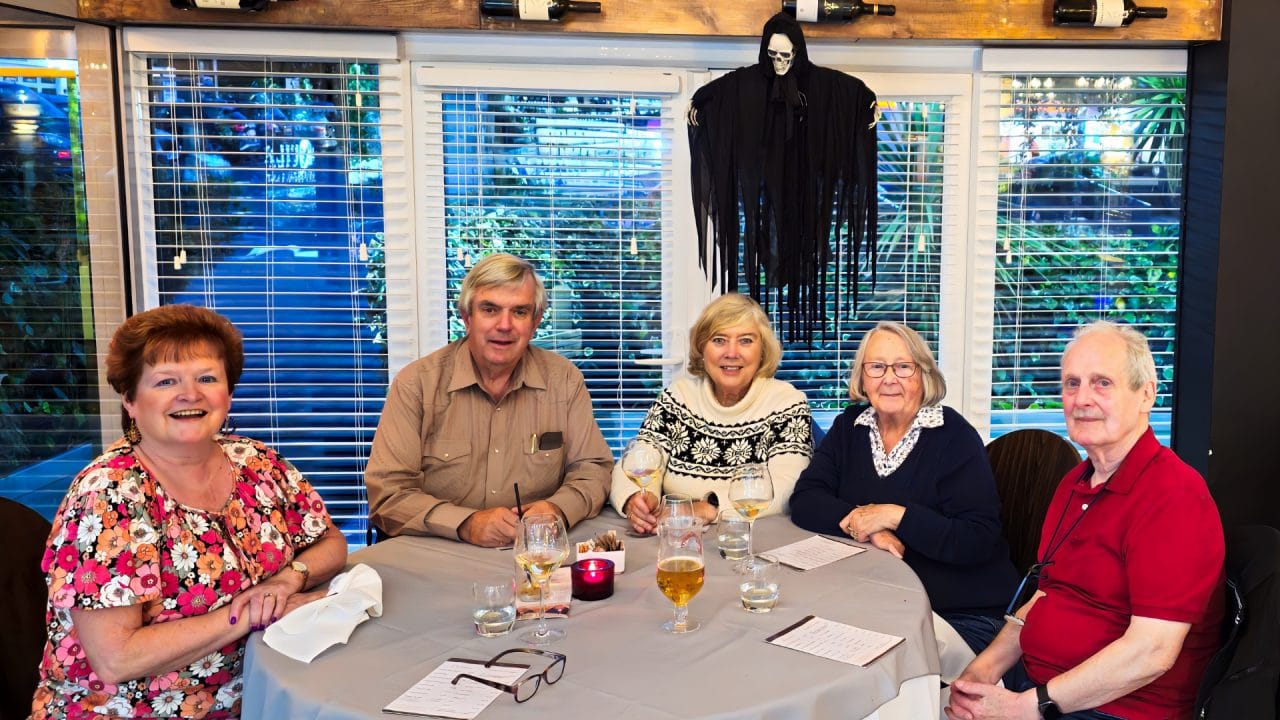
It wasn’t just the RV that caused last minute planning. I gave my family very little notice that we were hoping to spend some time in England and wanted to see them, so we had to juggle our plans to fit their schedules. That meant canceling our Cornwall trip so we could head to Norwich, and moving our visit to East Sussex from the start of our UK trip to the end. Despite all the hassles, we had a great time.
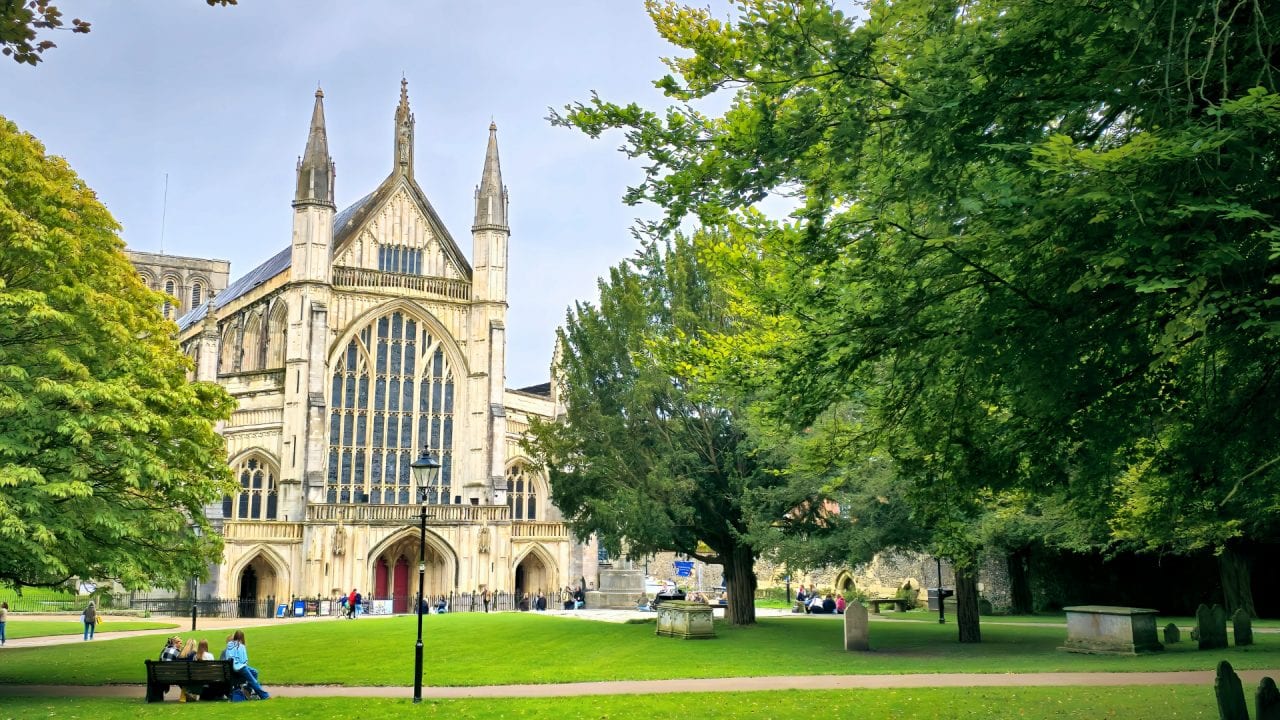
Our first stop was Winchester, where we originally planned to spend two nights but quickly extended it to three. How could I not take a photo of Winchester Cathedral, thanks in part to The New Vaudeville Band’s 60s big hit. Winchester Cathedral, one of the largest and oldest in England, is a top tourist spot. William the Conqueror was crowned here, and more recently, it became the resting place of Jane Austen. At 554 feet (169 meters), it’s the longest cathedral in Europe.
Mike took the interior shot above from the choir section, looking towards the altar—a small portion of the cathedral’s full length. Interestingly, the cathedral has issues with groundwater, and its 11th-century crypt often floods. They say the flooding creates a hauntingly beautiful scene, but I have my doubts.
In the early 1900s, the cathedral was on the brink of collapse due to sinking foundations. A diver worked underwater for six years, placing concrete sacks beneath the structure. His efforts are credited with saving the cathedral.

Here’s a picture of the legendary ‘King Arthur’s Round Table’ hanging in Winchester Castle. While the Round Table is a literary invention, and King Arthur himself is likely more myth than reality, this table is impressive. It’s over 5 meters (16 feet) in diameter and weighs more than a ton. It was actually commissioned during the reign of Edward I, who was captivated by the legends about King Arthur.
I’m not sure I fully get the fascination, but this Round Table has become a major historical attraction, drawing visitors from all over the world, captivated by its connection to the myth of King Arthur.
Our next stop was Norwich, where we visited my cousin Ashley—he was the only family member from my mum’s side we managed to see. The rest of our visits were with my dad’s side of the family. We stayed in Norwich for five nights, which gave us time to visit the seaside as well as exploring the town.
Norwich is very interesting with its 15th-century pubs and restaurants, and a market square that’s been running for 900 years. Mike and I stayed in the heart of the historic area, in the first apartment we’d booked for this trip. You do take a bit of a chance with apartments—since they’re not chain hotels, cleanliness can be hit or miss—but we were really lucky with both the apartments in Norwich and Chester. All our accommodations had great locations for walking around the historic areas.
Something I found really interesting was that in 1967, Norwich Street became the first pedestrianized street in the UK. Other towns had been proposing this since the early 1960s, but the shopkeepers kept resisting. Then things changed. In 1967 the main sewer in Norwich collapsed, forcing the street to close to cars—and suddenly, foot traffic surged! Over 50 years later, pedestrianized shopping streets are popular across Europe, and Mike and I loved wandering around them. It’s a shift that would take something huge to catch on in car-centric North America, too bad.
We almost extended our stay in Norwich to catch a Dolly Parton-themed show at the theatre, but then we found out that our flight was going to be earlier than expected. Instead, we went to see Now That’s What I Call A Musical, built around 80s music, kind of like Mamma Mia was with ABBA songs. The only problem? Mike and I aren’t huge 80s fans, and even the songs we recognized, we didn’t know the words to. But we still enjoyed getting out for the evening and catching a show.
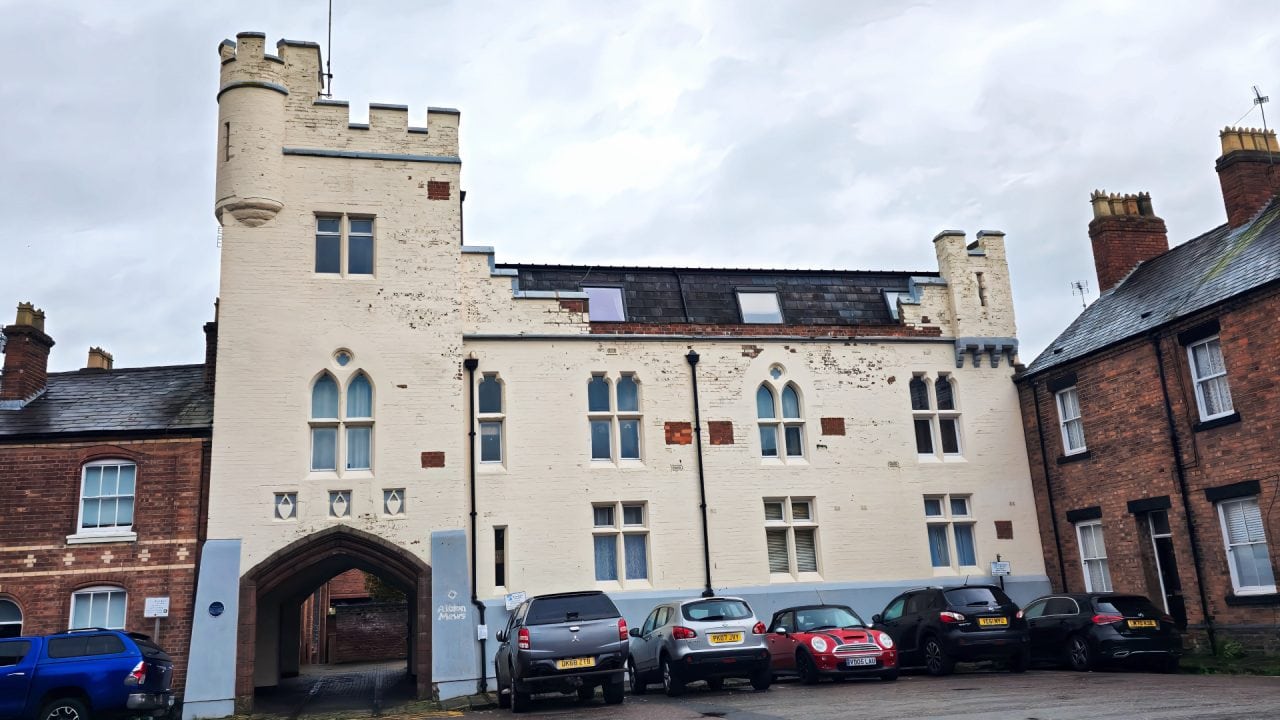
Next, we spent four nights in Chester, staying in another apartment. The directions mentioned a large, white, castellated building—’castellated’ was a new word for us, but it made sense the moment we saw the building. Our flat was the penthouse on the top floor, in the tower. The downside to this beautiful setup? No elevator! Still, we factored that in when planning our outings, and it worked out better than expected, despite my knees.
Chester is a walled city, originally founded by the Romans and then settled by the Anglo-Saxons in medieval times. An entrance to the city walls was just a minute or two from our apartment. Chester’s city walls are the oldest, longest, and most complete historic defensive structure in Britain, missing only about 100 meters. They were first built by the Romans nearly 2,000 years ago, and over time, the walls encircled the entire city. By the Middle Ages, Chester was one of the most protected and strategically important cities in the country.
In the 18th century, the walls were no longer used for defense and became a fashionable public walkway. Today, they’re one of Chester’s top tourist attractions and a popular spot for locals to exercise along the 1.8-mile path. Mike and I did one of our audio walking tours from the top of the walls.
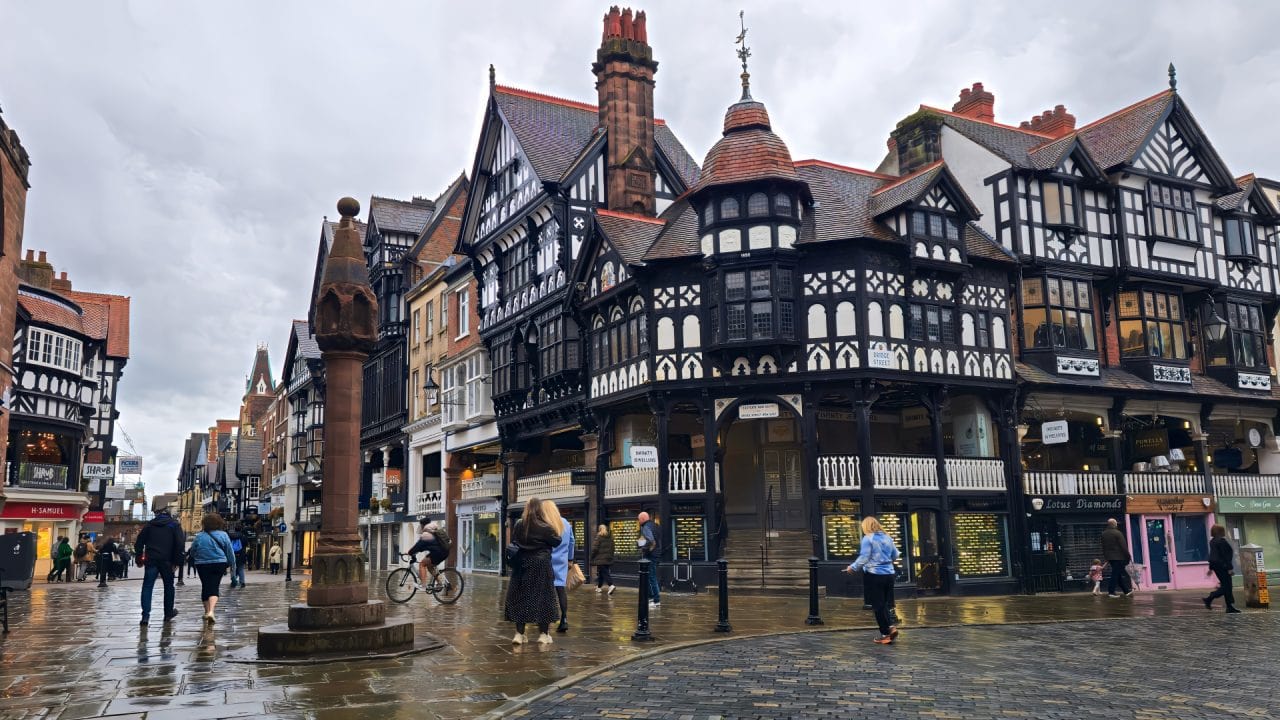
Chester’s Eastgate Clock, shown at the top of this post, is one of the city’s most iconic landmarks. It’s actually the second most photographed clock in the UK (you can probably guess which one is first!). The clock sits atop a historic gate in the city walls. It was added in 1899 to commemorate Queen Victoria’s Diamond Jubilee. Pedestrians walking along the walls get a great close-up view of this beautiful timepiece.
Mike and I did a second audio tour of Chester, and the guide kept mentioning buildings that were part of something called the ‘Chester Rose.’ I was confused—was this some kind of pattern laid over the town? It reminded me of the Sarajevo Roses, depicting where bombings killed multiple people in the streets. I looked into this and realized it’s actually the Chester Rows, not ‘Rose.’
The Rows are a major tourist attraction in Chester. They’re medieval two-level covered walkways, part of the city’s historic timber-framed buildings, running along the four main streets that intersect at High Cross. The Rows feature a mix of shops, restaurants, and businesses, with storefronts both at street level and elevated. Dating back to the 13th century, many of these buildings are timber-framed, though some were rebuilt during the Victorian era.
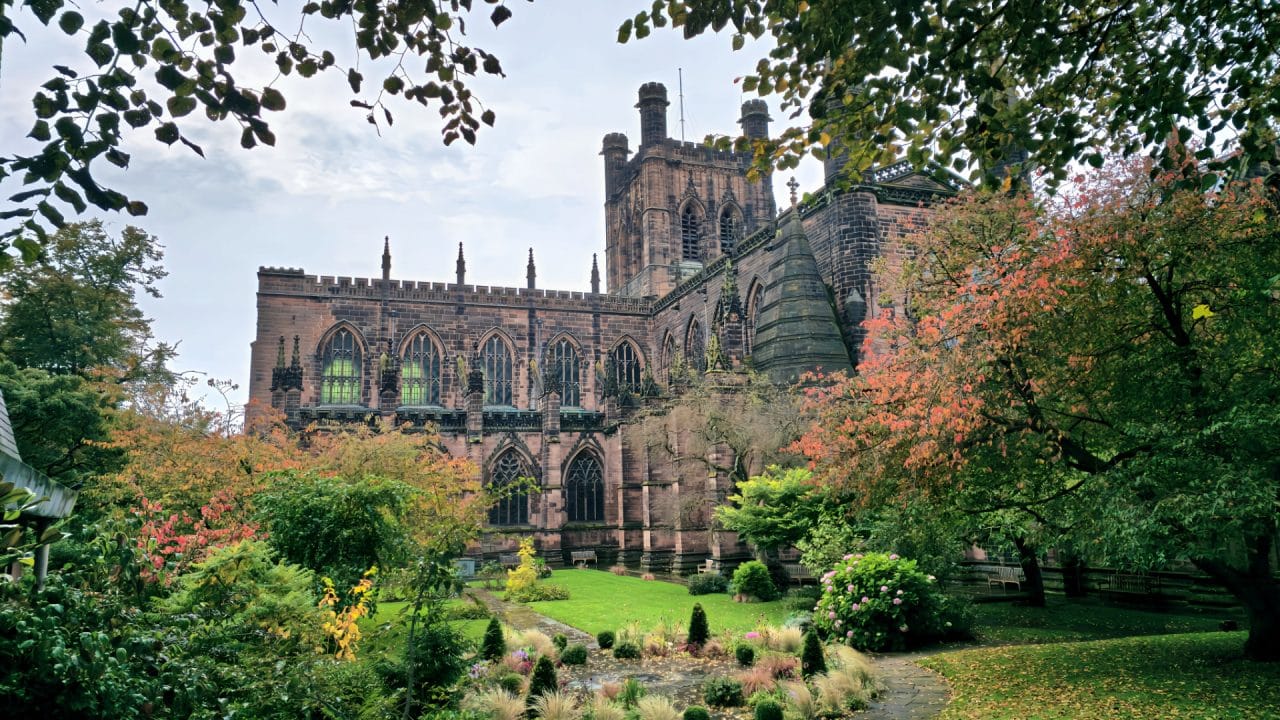
When Mike and I toured Chester Cathedral, I was really impressed by a set of mosaic pictures on the wall. These mosaics were added in the 1880s during a major rebuilding effort. They depict various Bible stories featuring patriarchs and prophets and are made from different shades of marble.
That evening, the cathedral was hosting ‘A Night at the Opera.’ While I’m not a huge opera fan, I enjoy the music and loved the idea of the Cathedral atmosphere. Mike wasn’t interested, so I went on my own. The setting was stunning, but it was freezing inside! Everyone who had dressed up nicely was huddled in their winter coats. One woman in a red blouse caught my eye—either she left her coat in the car or had spent so much time getting dressed, she refused to cover up, even if she froze.
After eight years, the LEGO project depicting Chester Cathedral was finally completed, raising around £300,000 (nearly $600,000 CAD) through brick sales and donations. Interestingly, several other cathedrals have LEGO projects to raise funds as well. Durham Cathedral’s project took three years to build and consists of 300,000 bricks. At the time, it was the largest LEGO model ever built by the public, with each brick sold for £1.
The picture near the top of my Quinn cousins was taken on a day trip from Chester when we visited them. After Chester, we headed south to stay with another cousin for a few days, which was lovely.
Driving around the UK, we’ve been surprised by the lack of windmills compared to the continent. There are some, but not nearly as many. Also, cycling isn’t as prominent here as it is in much of Europe, and the infrastructure for cyclists is definitely lacking. Cars and pedestrians aren’t as used to sharing the road with bikes, and the narrow roads with high hedges creating blind curves wouldn’t make me feel safe cycling here.
I’m finishing this post on the airplane enroute to Halifax. Supposedly, our RV’s ship arrived at the docks just as we were taking off. We’ve booked a hotel for the night, as we didn’t expect to pick up the RV today. We are really hoping we can get it tomorrow, although the internet suggests that might be wishful thinking. Wish us luck!

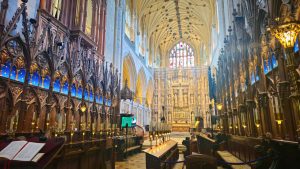
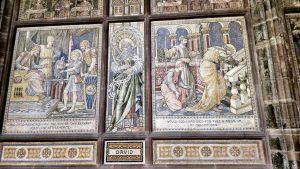
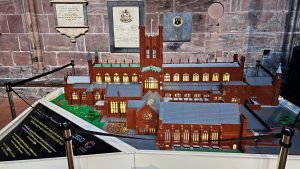
Leave a Reply